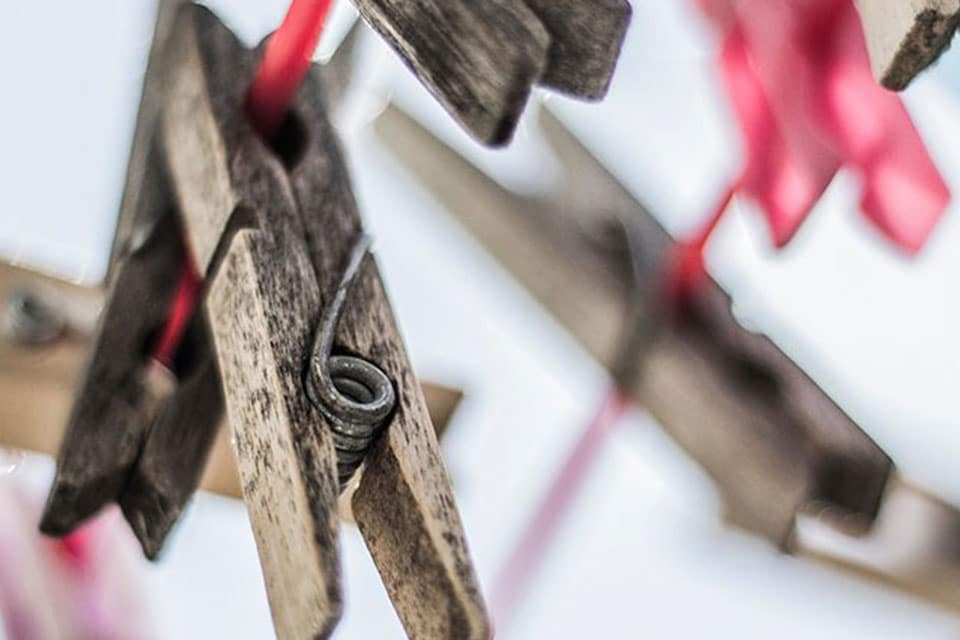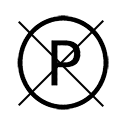
The right textile gestures to adopt
The best guide for your clothes, labels are even more important for work clothes, which sometimes require special care. To preserve them and guarantee their longevity and effectiveness, we recommend that you follow the care instructions on the labels.
On care labels, washing precautions are represented by symbols, in a very specific order. There are instructions for washing, bleaching, drying, ironing and professional cleaning.
In the case of a domestic wash, you will find the maximum wash temperature for the garment.

The maximum temperature is indicated in the centre of the tank.

This pictogram indicates that the garment can only be dry cleaned.
The square represents drying, and the circle the use of the tumble dryer. This symbol indicates the recommended optimum drying temperature, at a temperature equal to the number of dots in the drawing.

Tumble-drying allowed, but with moderate heat.

Tumble dryer authorised without temperature restriction.

Drying in a tumble dryer is prohibited.
This symbol indicates whether an oxygen- or chlorine-based treatment can be used to bleach the garment.

Bleaching is permitted with all types of products.

Bleaching is prohibited.
The number of dots shown corresponds to the maximum temperature to be used for ironing the garment.

Iron at a low temperature, not exceeding 110°C.

Ironing is permitted, but must not exceed 150°C.

Ironing at high temperatures, the iron can exceed 200°.

The garment must not be ironed.
The possibility of using solvent-based dry cleaning is indicated by this pictogram.

All solvents except trichlo with restrictions.

Dry cleaning is not permitted for laundry care.
Care labels must meet very specific standards. One of the aims of the regulations on clothing labels is to provide consumers with the best possible information on how to care for their clothes. However, certain instructions that are not on the labels, or that contradict them, can sometimes be interesting to apply during your washing.
Don’t hesitate to wash according to the instructions on the label! For example, a lightly soiled garment can be washed at 30°C despite a label indicating that it should be washed at 60°C.
Be careful to adjust the amount of detergent you use: too much will damage your machine and consume even more energy. Remember to choose your detergent carefully, opting for eco-labelled products for example.
It is important to fill your washing machine correctly to avoid rubbing against the drum, which damages the fibres of the garment. On the contrary, overfilling the drum will prevent water and detergent from circulating. Ideally, ¾ of your machine should be filled, with other work clothes or clothes that are safe to wear.
You should have thought of that!
Choosing an “eco” or “bio” programme is an excellent way of reducing the water temperature while extending the cycle time, saving an average of 30-45% on electricity. Delayed programmes for use during off-peak hours are also a good way of saving money.
With home care, you can wash your clothes right in your own home.
Linen hire companies collect, wash and redistribute your clothes.
Professional maintenance, in particular by dry cleaners, guarantees appropriate care and optimum use of resources.
Here are a few simple tips to keep your washing machine running smoothly.
There are a few tricks you can use to extend the life and quality of your clothes. Here are a few examples:
You should have thought of that!
There are natural and effective alternatives for staining your clothes: black soap, bicarbonate, Marseille soap, lemon or even terre de sommières!
Caring for your clothes and respecting the environment are not mutually exclusive!
Simply opt for concentrated products, eco-refills with no unnecessary over-packaging, or avoid using non-degradable wipes.
You should have thought of that!
No need to sort your rubbish if you’ve run out Make your own natural, responsible detergent by grating 2 tablespoons of Marseille soap and pouring a litre of boiling water over it before stirring. Leave to cool while the product gels, and your detergent is ready!
There are two drying options, but we recommend air drying, which is more environmentally friendly and preserves the fibres of the garment, as opposed to tumble drying.
The latter consumes more electricity, but it is sometimes necessary to use it for lack of space or time. If this is the case for you, remember to use a cycle that wrings out your clothes as much as possible before using the tumble dryer.
You should have thought of that!
Slip a dry bath towel into your tumble dryer with your clothes to dry, and it’ll cut drying time in half! As an added bonus, you’ll do less damage to your clothes and use less electricity.
There are a few simple and effective tricks you can use to make ironing a thing of the past! Spreading out your washing at the end of the wash cycle will limit creasing, for example.
You can also put your dry clothes in the bathroom before taking a shower, where the moisture will take care of removing the wrinkles.
You should have thought of that!
To get rid of static electricity on your synthetic polyester clothes, simply apply these two little tips: use hairspray, or moisturise your skin with cream if you’re wearing skirts or trousers.
Despite its name, dry cleaning does use a liquid during the cleaning process. Generally, these are chlorinated hydrocarbons such as perchloroethylene, whose use is prohibited for private individuals because of the harmful effects they can have on health and the environment. Alternatives are therefore preferable, such as sodium percarbonate.
As part of a more environmentally-friendly approach, dry cleaners are moving with the times!
The use of biodegradable cleaning products, shorter washing cycles, or even adapting the machines used, have enabled some dry cleaners to earn the status of guarantors of respect for the environment, or even certain labels. This makes it all the easier to turn to these dry cleaners to carry out certain professional treatments, such as re-impregnation, certain types of dry cleaning or bleaching.
The aim of bleaching is to restore a white garment by reducing the colour or removing it altogether. This industrial operation requires the use of solvents such as trichloroethylene, a hydrocarbon, or percarbonate, making a trip to the dry cleaners compulsory.
You should have thought of that!
Grandma’s tricks” are the best way to whiten your clothes naturally! Try lemon juice, bicarbonate of soda or white vinegar and see for yourself.
Do you have a question about our professional clothing or about our company?
Privacy policy – Terms and conditions – Legal information – Privacy & Cookies Policy – Lafont, a Cepovett Group brand
Lafont may use cookies to ensure the proper functioning of the site, to measure performance, to compile statistics and analyses relating to traffic and browsing, and to personalize content. Privacy Policy
Preferences Accept| Cookie | Duration | Description |
|---|---|---|
| cookielawinfo-checkbox-analytics | This cookie is set by GDPR Cookie Consent plugin. The cookie is used to store the user consent for the cookies in the category "Analytics". | |
| cookielawinfo-checkbox-functional | The cookie is set by GDPR cookie consent to record the user consent for the cookies in the category "Functional". | |
| cookielawinfo-checkbox-necessary | This cookie is set by GDPR Cookie Consent plugin. The cookies is used to store the user consent for the cookies in the category "Necessary". | |
| cookielawinfo-checkbox-others | This cookie is set by GDPR Cookie Consent plugin. The cookie is used to store the user consent for the cookies in the category "Other. | |
| cookielawinfo-checkbox-performance | This cookie is set by GDPR Cookie Consent plugin. The cookie is used to store the user consent for the cookies in the category "Performance". | |
| viewed_cookie_policy | The cookie is set by the GDPR Cookie Consent plugin and is used to store whether or not user has consented to the use of cookies. It does not store any personal data. |
| Cookie | Duration | Description |
|---|---|---|
| cookielawinfo-checkbox-autre | 1 year | CookieYes set this cookie to store the user consent for the cookies in the category "Analytics". |
Until 27 November.
Discover our selection of products at unbeatable prices.
Up to 45% off

Newsletter subscription
Subscribe to our Lafont newsletter, which contains our latest news and the best tips for your workwear.